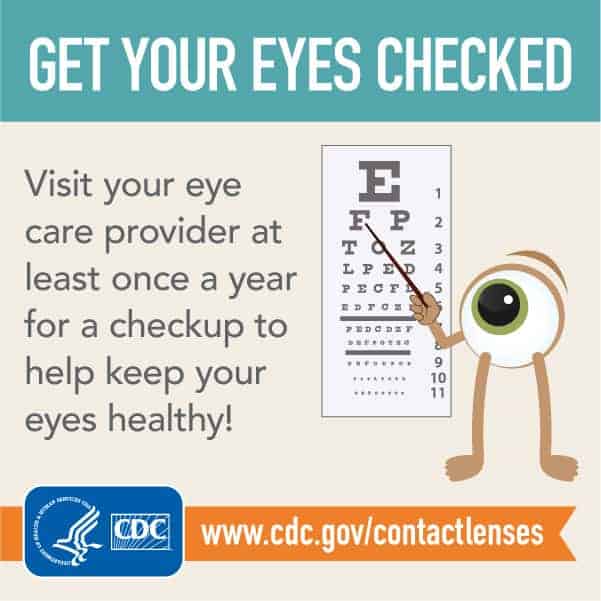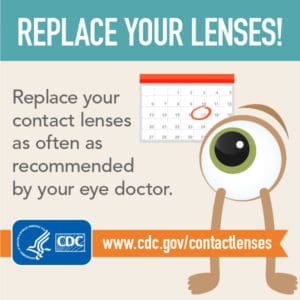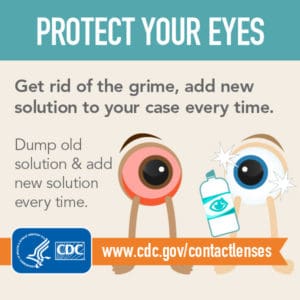
Contact Lens Health Week
August 23, 2019

August 19th to 23rd is Contact Lens Health Week, organized by the CDC. Therefore, it is only fitting that we go over three basic steps to ensure proper contact lens health. We only get one pair of eyes! #onepairtakecare
1. Remove contact lenses before sleeping
According to the CDC, sleeping with contacts increases the chance of an eye infection by 6 to 8 times. Additionally, the eye does not receive enough oxygen while sleeping with contacts, and new blood vessels can grow on the front surface of the eye in attempt to help the “suffocating” cornea. If you feel like you’re getting tired, take out your contacts! Even a short nap can causes problems that lead to infection, swelling, and potential vision loss.
2. Follow the correct disposal schedule
“Dailies” or daily disposable contacts should be thrown away every single day, whereas a monthly lens is disposed after 30 days. This does not mean 30 days of wear; The clock starts as soon as the pack is opened whether the lenses are worn twice or thirty times. It’s like opening a jar of salsa…it will still get moldy after so many days, no matter how many servings you take from it. Over-wearing a pair of contact lenses increases the risk of infection and other sight-harming conditions. Mark it in your calendar and stick to a routine of when the contacts need pitched.
3. Use fresh solution every day
Mixing old or used solution with fresh solution greatly decreases its ability to kill germs. Dump the used solution each morning and let the case air-dry during the day. When you’re ready to remove your contacts at night, use fresh solution to keep those contacts squeaky clean. If wearing daily disposable contacts, they go straight to the trash…no re-wearing dailies. It is also important to never use water or saliva to clean/rinse contact lenses. Contacts are germ magnets that can transfer bacteria straight to the eye upon wearing the lens.
Following these three easy steps will help minimize the risk of an eye infection that could harm your valuable sight. Remember #onepairtakecare
Resources:
1. https://www.cdc.gov/features/healthy-contact-lens/